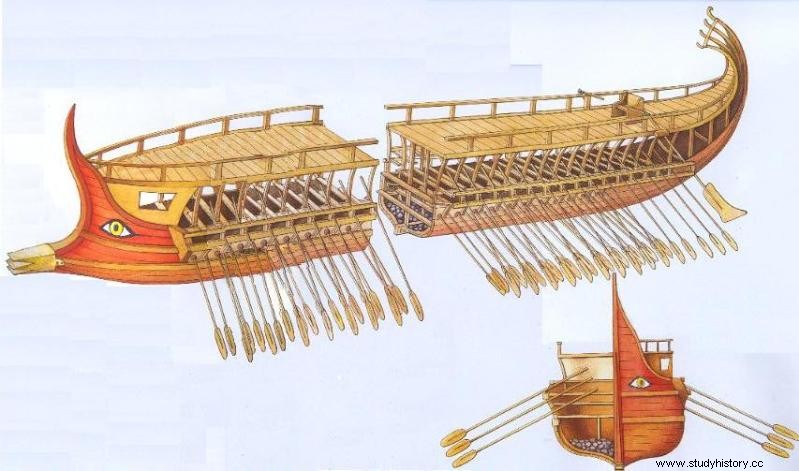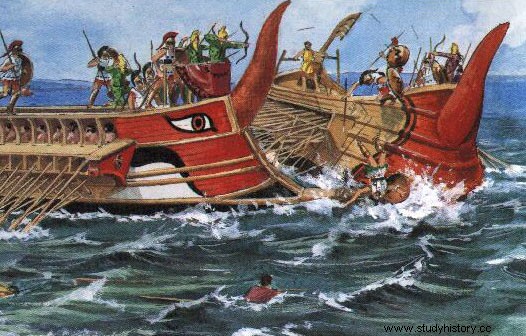The triremes They were warships that first appeared in Ionia and became the dominant warship in the Mediterranean Sea from the late 6th century BC. until the fourth century BC. C., and later, due to its effectiveness, under the Roman Empire until the fourth century. These ships were responsible for the hegemony of the Athenian navy during the 5th century BC. after the victory in the naval battle of Salamina against the Persians of Xerxes.
The triremes were boats of about 35 meters in length (length) and about 4 meters in beam (width), with one or two sails, depending on the time, and 170 rowers in total located in three rows and at different heights. Sails were used to navigate and oarsmen played a special role during battles. These, for the most part, were free men who received a salary and special training to follow a constant and rhythmic rhythm. The complete crew of a trireme could be composed of the captain, a dozen sailors and officers, another dozen soldiers or archers and 170 oarsmen distributed as follows on each side:
- 31 at the top (the best paid since the angle of inclination of the oar required more effort)
- 27 in the middle
- 27 in the lower part (a few centimeters from the waterline)

The strategists of Athens put aside hand-to-hand combat – that's why the triremes had hardly any soldiers – and focused on ramming and sinking enemy ships. To do this, they equipped their triremes with a bronze or iron spur located as an extension of the bow below the waterline. But all this they also had, for example, the Persians in Salamina; So what did they have that made them rule the sea for a century?
Hyperession (a kind of vogue cushion)

The hyperession It is a kind of cushion made of oiled animal skin and that the oarsmen put on as a culera. Instead of sitting fixed, with this simple cloth the rower moves along the seat, shrinking and stretching the legs as in sports rowing today, lengthening the rowing path and increasing the efficiency of each stroke. In this way they could sail faster than their opponents and, more importantly, turn sharply to attack broadside and ram enemy ships. It seems that the inventor was Themistocles , the strategist of Salamina .

